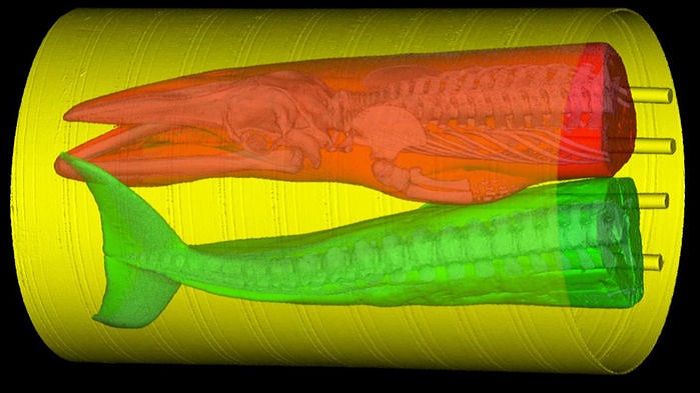Podcast: Play in new window

BOB HIRSHON (host):
How whales hear. I’m Bob Hirshon and this is Science Update.
(Minke whale calls)
Fin and minke whales don’t just use their ears to listen to other whales. They tune in with their enormous skulls, which, like antennas, allow them to detect low-pitched calls even at a distance.
TED CRANFORD (San Diego State University):
The primary part of the whale’s head that’s receiving the sound is the skull of the animal, not really the ears. So the skull is warped by the sound coming in and moving it.
HIRSHON:
That’s San Diego State University biologist Ted Cranford. He and UC San Diego engineer Petr Krysl created three-dimensional computer models of the whales with a space-age scanner. This allowed them to test the sensitivity of the skulls to different sound frequencies. At a meeting of the American Association of Anatomists, Cranford said the research could help scientists understand the effects of low-frequency shipping noise on whales. I’m Bob Hirshon for AAAS, the science society.
Story by Susanne Bard

 Wind Temperature
Wind Temperature